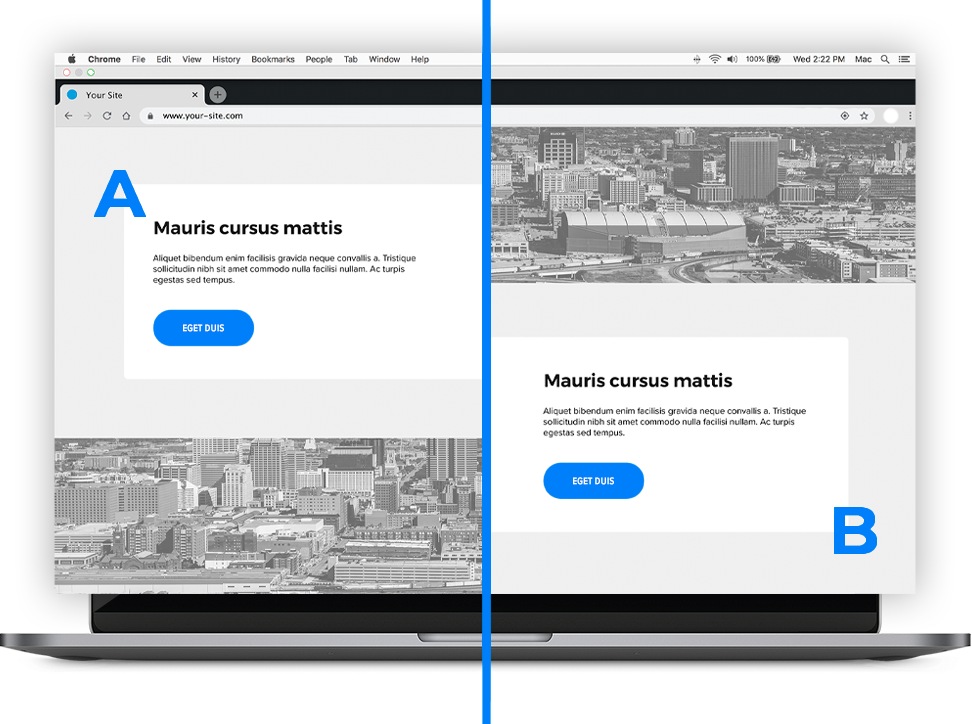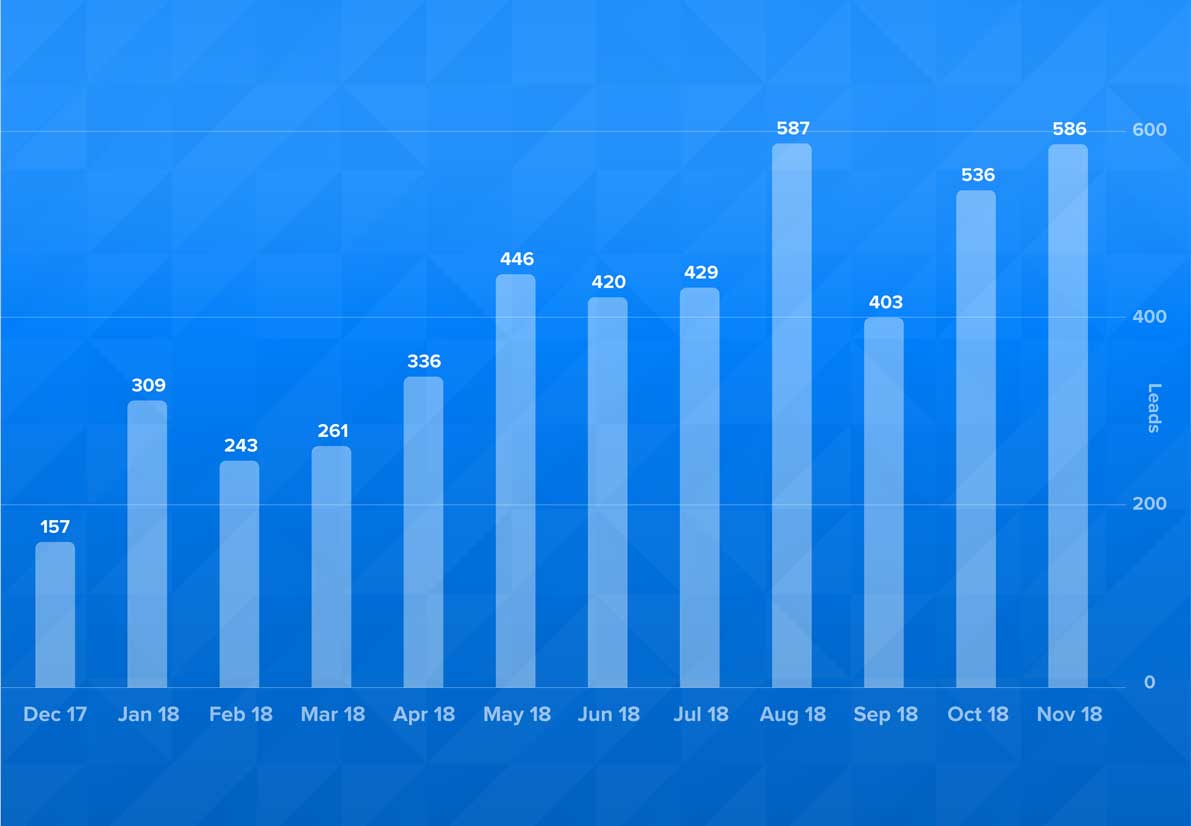Conversion Rate Optimization
Get More Leads
We'll turn your visitors into customers with a successful CRO campaign. See how today!






What is Conversion Rate Optimization?
The digital marketing strategy of increasing the percentage of website visitors who take desired actions such as filling out a form, becoming customers, and more by using analytics and user feedback to improve your website is conversion rate optimization (CRO). Understanding how users move through your site, the actions they take, and what’s hindering them from meeting your goals will help you create a productive conversion rate strategy.
Increase your conversions
Conversions happen when a visitor completes a desired site goal. The main goal is for the user to make a purchase. Macro-conversions can include buying a product from a website, requesting a quote, or subscribing to a particular service. Micro-conversions include actions like signing up for email lists, creating an account, and adding a product to the cart. Increasing conversions isn’t an overnight process. Calculating conversions and collecting this data to do begin this process takes time. With each industry, the data differs which creates a slightly different marketing scope.

8 ways to increase conversion rate
When increasing conversions, the first step is understanding what works and doesn’t work with your audience. Your potential customers have high expectations along with specific wants and needs which is why it’s important to make them an offer they can’t pass up. However, it’s ok if they don’t make a conversion the first time. Perhaps they don’t have the money right now to invest in your product, or they won’t need it until the future. Great offers, fascinating visuals, well-written text, and compelling calls to action are likely to stay on your visitor’s minds. There is always the possibility they will come back and convert.
Collecting data from tools like Google Analytics helps you learn more about your website. Looking at the data can help you discover patterns you can base your CRO strategy on. Using a behavior flow report can help you track the actions users take. From here you can see pages that encourage people to continue reading and pages where people leave quickly. The goal is for people to spend a lot of time on the page that can lead them to visit other pages on your site so they can understand everything you offer. By having access to this information, you can identify the pages that aren’t doing their jobs and optimize them accordingly. Updating content, references, statistics, and generally re-designing the website is a good foundation for CRO.
The basis of most conversion funnels consists of awareness, interest, consideration, and conversion. By using this simple formula, you can determine aspects that allow for brand awareness, engage interest, prompt them to think about your product, and makes them want to convert. Testing what works and drives up conversions is a good way to troubleshoot ideas.
Discovering what your audience wants is done through more than just one lead magnet. Testing out lead magnets and seeing what works, is a great way to effectively increase conversions. Trying different things like publishing frequency and content length to calls to action and lead magnets can allow for website growth and development. You can see where people click, stop scrolling and spend the most time. Recordings show you exactly how users interact with your website. Deciding what devices you want to track from is a possibility as well. You can consider optimizing pages if they aren’t getting any engagement. Pages perform better when their designs are up-to-date and optimized. Scientific evidence shows that audiences usually prefer minimal designs. This doesn’t work for everyone, but design matters more than you might think.
Consumers usually stop when they encounter a form. Filling in the fields takes time that they don’t want to spend. Removing unnecessary form fields, changing fields into checkboxes or other elements, and enabling autofill can reduce friction and improve the user experience. Testing these changes and determining if they work can dramatically develop your site. Troubleshooting multiple design versions with varying colors and different CTA’s can help you understand the elements that work and don’t work. Speaking of CTA’s, different ones work for different businesses. There will likely be multiple ones you will need to try and see what works best. You can also discover which ones drive the most engagement.
When potential costumers see that other people–especially high-profile clients–are loyal to your company and take the time to rave about it, they will trust those opinions. Testimonials put the customers at ease. Incorporating testimonials in the main pages of a site can boost the conversion rate significantly.
Customers avoid risk at all costs. Putting their money at stake is not something they are willing to do unless they are almost positive they will get what they paid for. Ensuring a money-back guarantee relieves and puts the customers at ease because they know that they are safe. You may be worried that you’ll lose all your money with money-back guarantees, however, don’t be. If you build amazing products and services, people will trust you and continue buying. If you are an e-commerce store, make them return the product before you offer their money back. Implementing a box where they can leave feedback on why they weren’t happy with your product allows for meaningful insights that you can use to improve your products and services. Money-back guarantees don’t just increase your conversion rate, but they also build trust and help the customer feel secure.
Videos are a form of content that increases your audience and gather new leads. Trying out different forms of content will help you understand which ones provide benefits to your company by seeing how the audience responds. You can try different video formats to produce content that works for you and your audience. Videos can supplement wordy content by breaking it up with something different to focus their attention on.
Conversion rates can boost up to 40 percent by removing navigation links from your landing pages. Many businesses don’t do this even though it’s easy to incorporate.
Get a Free SEO and Ads Audit ($1,500 Value)
Before we work together, we would like to review your marketing so we can provide you with insights to help you evaluate your current marketing campaign performance. Why is it free? It’s important to build a foundation of trust when partnering with someone, and our free ads audit is one way to built trust.
You have nothing to lose. Schedule a call with one of our PPC experts.
We'll turn your visitors into customers with a successful CRO campaign. See how today!

Improve user experience
User experience is someone’s perception, reaction, or response to the use and expected use of a product or service. Users want a site that functions and moves quickly too. They will leave your site if there is any delay in page load speed which can reduce your conversions by 7 percent. Users likely have multiple tabs open and are multi-tasking by clicking through different pages and closing out the ones that aren’t loading or aren’t relevant. Speeding up your website can dramatically help increase your site’s conversions.
A/B Split Testing
Collecting data and results is easy with A/B testing. Creating different versions of the same page and determining which one converts better is the basis of A/B testing. Changing one variable like the CTA and running both of the options is a way to find the optimal conversion for your piece. Sometimes you may need to run two versions of the same page to see conversions, and other times you will need to run ten versions to get the conversions you want to see. However, you may need to go back in a few months and begin this process again to increase conversions even more. By testing one change at a time, you can pinpoint and establish which changes are effective on the customer, and which ones are not.
Here are some crucial steps in the process of A/B testing:
GatherinG Data
You can gain insight into where you should start optimizing by looking at the analytics. Search for your pages with low conversion rates so you can improve them.
Setting Goals
Making clear goals for your conversions is helpful when determining which variation of a page is the most successful. These goals can be different for each page and can range from clicking a button to the purchase of a product.
Produce a Hypothesis
After you’ve set a goal, make a list of ideas and organize them in terms of the impact expected. The purpose of a hypothesis is to create a better version of the current page.
Build Variations
Many variations include changes in design/format, switching the order of pieces on the page, or hiding certain elements.
Begin Variations
Examine Results
Measure conversion improvement
Tracking the pages you are optimizing for conversions is an important part of the measuring process. When measuring the conversions, you can decide what works for your site and what doesn’t. Over time and with multiple A/B tests your conversions should generate leads. Improved conversions can create a better user experience and develop more revenue for your company. We can help your company improve conversions by running multivariate tests and optimizing your site.

Schedule a free consultation with one of our digital sales consultants
We want to add your business to the list of partner companies that made millions through a partnership with Helium.



Ask us anything
Want an Audit from an SEO Professional?
Need help developing an overall digital marketing strategy or developing a specific plan for SEO or PPC. Fill out the details to the right, and an SEO professional will contact you to help you understand what SEO opportunities you have.

We are a digital marketing agency building SEO campaigns and solutions to help brands achieve their goals and generate revenue. Locations we serve.






